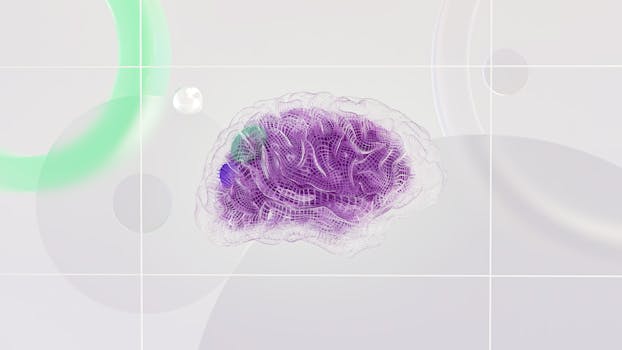What is affective neuroscience?

What is affective neuroscience?
Affective neuroscience explores the intricate relationship between our emotions and brain processes. It seeks to understand how our brain generates feelings and how these emotions influence our behavior. In today’s fast-paced world, where emotional intelligence is increasingly recognized as a valuable asset, understanding affective neuroscience can significantly enhance both personal and professional growth.
Understanding Affective Neuroscience
Affective neuroscience is a multidisciplinary field that merges neuroscience and psychology to study how the brain processes emotions. It examines the neural mechanisms behind feelings, helping us grasp why we react the way we do in various situations. This understanding can lead to better emotional regulation, enhance mental health treatments, and even improve workplace productivity. For a broader perspective, you can refer to the comprehensive overview provided by Wikipedia on Affective Neuroscience.
The Basics of Affective Neuroscience
At its core, affective neuroscience encompasses several critical areas:
- Emotions and Feelings: It focuses on understanding the emotional spectrum, ranging from joy and love to anger and fear.
- Brain Processes: The field investigates how specific brain structures are activated during emotional experiences, shedding light on the biological underpinnings of feelings.
By studying these elements, researchers aim to unravel how our emotional responses are shaped and the impact they have on our daily lives.
Historical Background
The roots of affective neuroscience can be traced back to the early 20th century when researchers began linking emotional experiences with brain activity. Pioneering figures like Paul Ekman and Jaak Panksepp played pivotal roles in establishing the field. Their groundbreaking work has paved the way for numerous studies that explore the neural correlates of emotions. For further reading, consider visiting the Noba Project on Affective Neuroscience.
Key Components of Affective Neuroscience
Affective neuroscience is built upon several key components that help us understand emotional processing in the brain.
Emotional Brain Structures
Specific brain structures play vital roles in how we experience and express emotions. Some of the most significant include:
- Amygdala: Often dubbed the emotional center of the brain, the amygdala is crucial for processing fear and pleasure.
- Prefrontal Cortex: This area is involved in regulating emotions and decision-making, allowing us to manage our reactions effectively.
- Limbic System: The limbic system, which includes the amygdala and hippocampus, is integral in forming emotional memories and responses.
Understanding these structures helps us better grasp how emotions influence our thoughts and behaviors.
Neurotransmitters and Hormones
The brain communicates through a network of neurotransmitters and hormones that regulate our feelings. Here are some key players:
- Serotonin: Often known as the “feel-good” neurotransmitter, serotonin helps regulate mood and anxiety.
- Dopamine: Associated with pleasure and reward, dopamine plays a significant role in motivation and emotional responses.
- Cortisol: This hormone is released in response to stress and affects how we react to emotional challenges.
These chemical messengers are essential for maintaining emotional balance and can impact mental health significantly.
Applications of Affective Neuroscience
The insights gained from affective neuroscience have profound implications across various fields.
Mental Health Treatment
One of the most promising applications of affective neuroscience is in mental health. Therapies informed by this field can enhance treatment for mood disorders, anxiety, and trauma. For example, understanding how emotions are processed can lead to more effective therapeutic techniques, such as cognitive-behavioral therapy (CBT) or exposure therapy. The National Center for Biotechnology Information provides an in-depth look at clinical applications in this area.
Enhancing Productivity and Emotional Intelligence
In today’s workplace, emotional intelligence is becoming increasingly valued. By applying principles from affective neuroscience, individuals can develop better self-awareness and emotional regulation skills. This understanding can translate into improved communication, collaboration, and overall productivity. By recognizing how emotions influence decision-making, you can enhance your professional interactions and personal relationships.
Future Directions in Affective Neuroscience
The field of affective neuroscience is ever-evolving, with several exciting areas of research on the horizon.
Technological Advances
Recent advancements in neuroimaging technologies, such as functional MRI (fMRI) and electroencephalography (EEG), have revolutionized our ability to study emotions in real-time. These technologies allow researchers to observe brain activity as individuals engage with emotional stimuli, providing valuable insights into emotional processing. For an overview of these methods, check out the article on Brain Imaging Methods.
Interdisciplinary Approaches
Affective neuroscience increasingly intersects with other disciplines, such as psychology, artificial intelligence, and education. By collaborating across fields, researchers can develop comprehensive models of emotional processing that inform various applications, from mental health interventions to educational strategies.
Conclusion
Affective neuroscience is a vital field that enhances our understanding of emotions and their influence on human behavior. By studying the brain’s emotional processes, we can improve mental health treatments, foster emotional intelligence, and enhance productivity in various settings. As research continues to unfold, the implications of affective neuroscience will undoubtedly shape how we understand ourselves and interact with the world around us.
Whether you’re looking to boost your emotional intelligence or simply understand your feelings better, diving into affective neuroscience offers a path to greater self-awareness and personal growth.